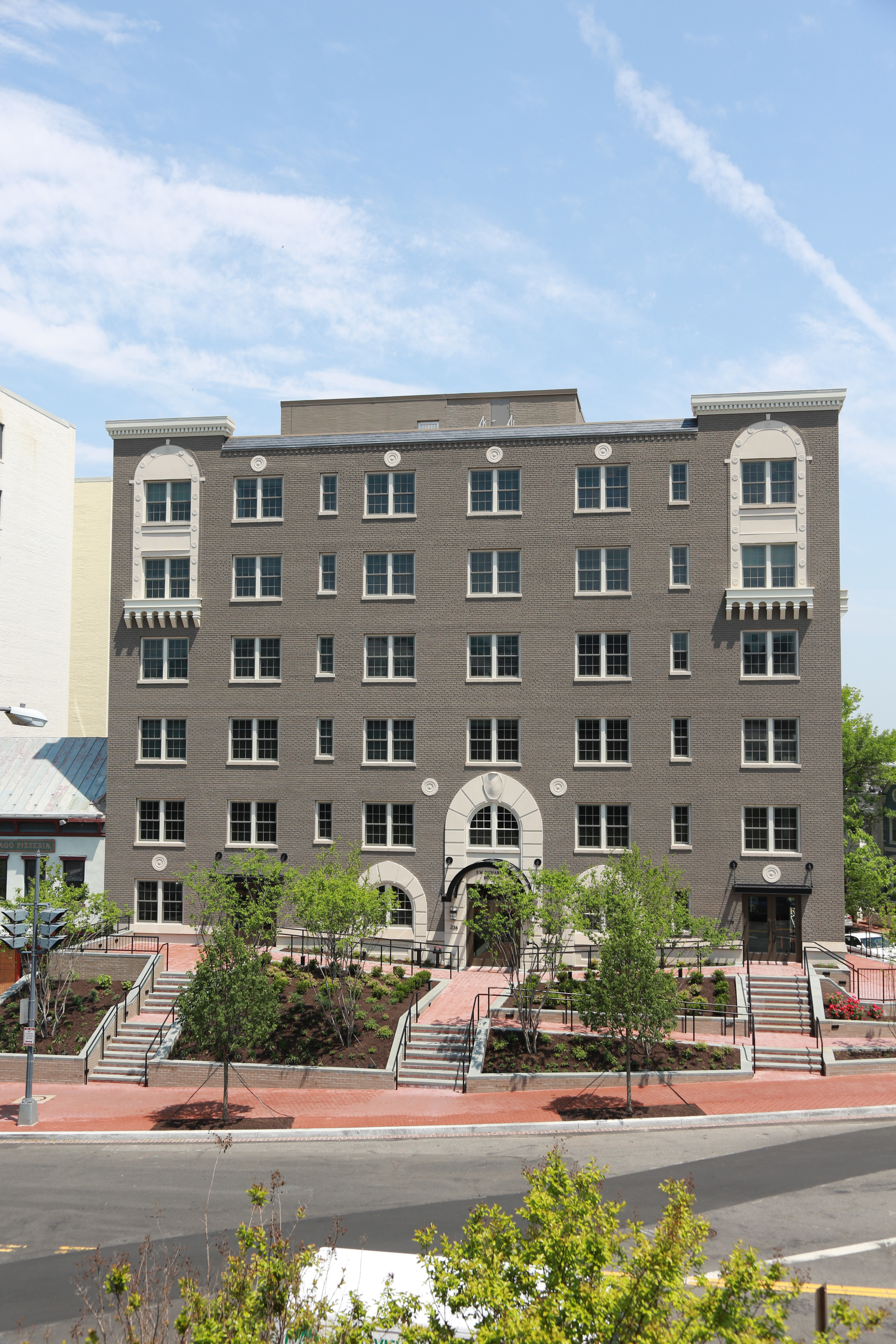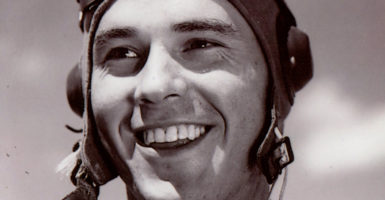The Heritage Foundation’s new building to house dozens of public policy interns on Capitol Hill is named after a World War II hero, businessman, and philanthropist whose family became a major donor to the leading conservative think tank.
The E.W. Richardson Building, to be dedicated Wednesday by Heritage officials, also will provide quarters for the think tank’s approved guests and, at street level, restaurants for the neighborhood.
“E.W. Richardson was an American hero who fought bravely in World War II and endured captivity as a prisoner of war in Nazi Germany,” Sen. Ted Cruz, R-Texas, scheduled to speak at the dedication, said in a statement provided ahead of time to The Daily Signal. Cruz added:
He was a proud American, hardworking business owner, mentor, friend, husband, and father. His legacy of bravery, heroism, and courage lives on, which is why it is fitting that the Heritage Foundation is honoring E.W. Richardson by dedicating a new home for future American leaders to his memory. E.W. Richardson’s timeless example endures, and he continues to be a model of leadership for many Americans.
Richardson died in 2003 at age 81 at his home in Austin, Texas.
Heritage Foundation President Kay Coles James was scheduled to oversee the ribbon-cutting ceremony for the seven-level, 36,000-square-foot building, which is next to the think tank’s headquarters on Massachusetts Avenue in Northeast Washington. On the Senate side of Capitol Hill, the complex is within quick walking distance of House and Senate office buildings.
“Rich” Richardson, who joined the Army Air Corps at age 20, was a bomber pilot and squadron commander during World War II. He was assigned as a flight instructor, training subordinates before becoming a lead bomber pilot on significant missions.
Richardson was flying his 42nd mission on Feb. 22, 1945, when German fire over Vienna struck his B-24 Liberator bomber, which carried up to 10 crew members. A captain, he was a mission away from promotion to the rank of major.
As his aircraft burned, Richardson kept it steady and waited for his crew to bail out with parachutes before escaping himself, breaking his collarbone and dislocating his hips on the way out.
He was captured, interrogated in Nuremberg, Germany, and spent the rest of the war held in one of the biggest prisoner-of-war camps, at Moosburg, in Bavaria.
Richardson and 80,000 other POWs were freed on April 29, 1945, when Gen. George Patton’s Third Army liberated the camp.
After the war, the Colorado native moved to Albuquerque, New Mexico, where he and a friend started a used-car business. He went on to own Renault and Volvo dealerships in the 1950s.
He founded Rich Ford in Albuquerque, which became one of the most successful Ford dealerships in the country.
Richardson and his wife Barbara, who survives him, had four children (Terry, Kim, Patty, and Sandy), six grandchildren, and three great-grandchildren.
In 2014, Richardson’s family and close friends made a gift to The Heritage Foundation with the stipulation that it be used to memorialize his patriotic legacy, and this gift made the E.W. Richardson Building possible.
Through its Young Leaders Program, Heritage this year will welcome 185 interns in the spring, summer, and fall semesters to participate in aspects of the think tank’s work in the nation’s capital. An intern dormitory previously was part of the main building.
The new intern housing includes 27 fully furnished units, each with bathroom and kitchenette, that can accommodate two or three interns. Furnishings include single beds, dressers, desks, dining table and chairs, and TV.

A financial gift from a war hero’s family and close friends made The Heritage Foundation’s E.W. Richardson Building possible. (Photo: The Daily Signal)
The building also offers a gym, lounge, and laundry facility for tenants.
James Carafano, a Heritage vice president who oversees the Kathryn and Shelby Cullom Davis Institute for National Security and Foreign Policy, is also the think tank’s E. W. Richardson fellow.
Naming a building that houses interns after Richardson is especially appropriate because the war hero embodied Heritage’s traditional American values, Carafano told The Daily Signal in an email.
“Before the ribbon-cutting, we did a wreath laying at the [National] World War II Memorial,” Carafano said. “Behind us was a quote from Gen. George Marshall.”
It was a famous line of Marshall’s: “We are determined that before the sun sets on this terrible struggle, our flag will be recognized throughout the world as a symbol of freedom on the one hand and of overwhelming force on the other.”
Carafano said:
E.W. Richardson, one of the greatest generation, could have written those words himself. He believed in peace through strength. He believed in freedom. His name and Heritage belong together.




























